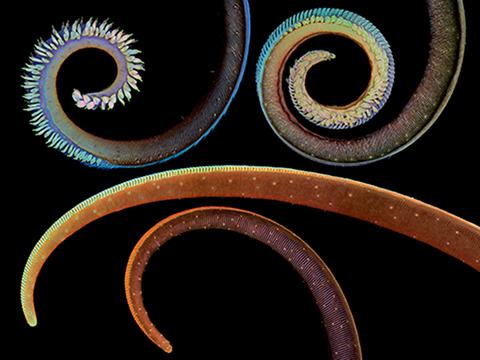当前位置:
X-MOL 学术
›
Funct. Ecol.
›
论文详情
Our official English website, www.x-mol.net, welcomes your
feedback! (Note: you will need to create a separate account there.)
Physical adaptations of butterfly proboscises enable feeding from narrow floral tubes
Functional Ecology ( IF 4.6 ) Pub Date : 2021-06-17 , DOI: 10.1111/1365-2435.13863 Matthew S. Lehnert 1 , Daytona D. Johnson 1 , Jianing Wu 2 , Yu Sun 2 , Rena J. Fonseca 1 , Jan Michels 3 , Jamie S. Shell 1 , Kristen E. Reiter 1
中文翻译:

蝴蝶长鼻的物理适应性使得能够从狭窄的花管中进食
更新日期:2021-06-17
Functional Ecology ( IF 4.6 ) Pub Date : 2021-06-17 , DOI: 10.1111/1365-2435.13863 Matthew S. Lehnert 1 , Daytona D. Johnson 1 , Jianing Wu 2 , Yu Sun 2 , Rena J. Fonseca 1 , Jan Michels 3 , Jamie S. Shell 1 , Kristen E. Reiter 1
Affiliation

|
- Butterflies use a proboscis, a microfluidic probe engineered by natural selection, to feed on nutritive fluids. The structural configuration of proboscises relates to feeding habits; however, the adaptations that enable proboscis entry into narrow floral corollas lack experimental evidence.
- Here, we investigated proboscis adaptations that enable entry into corollas using funnel-shaped glass capillary tubes and performed feeding trials with six butterfly species of different feeding habits. Proboscises were either guided (natural treatment) or forced (forced treatment) into the capillary tubes that were filled with a 20% sucrose solution. The treatments were video-recorded to determine the depth the proboscises reached into the tube and how long they remained there. The results were interpreted in terms of proboscis morphology, friction forces and the material properties of the cuticle.
- In the natural treatment, butterflies classified as flower visitors were more efficient at feeding from the tubes, reaching an average 1.83× deeper into the tubes than the other species and never getting their proboscises stuck. The non-flower-visiting species, in contrast, had their proboscises remain in the tube 17× longer than the flower-visiting species, with 90% of them getting their proboscises at least partially stuck. The butterfly species with generalist feeding habits fed more efficiently than the non-flower visitors, but less than the flower visitors. A similar pattern was observed in the forced treatment.
- Flower-visiting butterflies had smoother and more tapered proboscises, lower friction forces and a semi-circular cross-section that would reduce bendability and was augmented by a more sclerotized cuticle. Proboscises of flower-visiting butterflies, therefore, have a suite of adaptations that operate synergistically to optimize their feeding habits.
中文翻译:

蝴蝶长鼻的物理适应性使得能够从狭窄的花管中进食
- 蝴蝶使用长鼻,一种通过自然选择设计的微流体探针,以营养液为食。长鼻的结构配置与进食习惯有关;然而,使长鼻进入狭窄花冠的适应性缺乏实验证据。
- 在这里,我们研究了使用漏斗形玻璃毛细管进入花冠的长鼻适应,并用六种不同摄食习惯的蝴蝶进行了摄食试验。长鼻被引导(自然处理)或强制(强制处理)进入填充有 20% 蔗糖溶液的毛细管。对治疗进行视频记录,以确定长鼻进入管中的深度以及它们在那里停留的时间。根据长鼻形态、摩擦力和角质层的材料特性来解释结果。
- 在自然处理中,被归类为花卉访客的蝴蝶更有效地从管中取食,比其他物种平均深入管中 1.83 倍,并且永远不会卡住它们的长鼻。相比之下,非访花物种的长鼻在管中停留的时间比访花物种长 17 倍,其中 90% 的长鼻至少部分卡住。具有一般摄食习性的蝴蝶物种比非花卉游客更有效地进食,但低于花卉游客。在强制治疗中观察到类似的模式。
- 访花蝴蝶有更光滑、更锥形的喙、更低的摩擦力和半圆形的横截面,这会降低可弯曲性,并通过更硬化的角质层增强。因此,访花蝴蝶的长鼻具有一套协同作用以优化其摄食习惯的适应性。











































 京公网安备 11010802027423号
京公网安备 11010802027423号